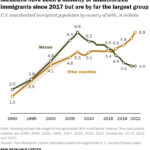Are you curious about when the time changes in Mexico, especially concerning travel and planning within the LGBTQ+ community? Gaymexico.net offers you the latest updates and insights into Mexico’s time adjustments, ensuring your trip is smooth and well-coordinated. We’ll explore the specifics for LGBTQ+ travelers, including how these changes affect different regions and popular destinations.
1. Understanding Time Change in Mexico: An Overview
When is the time change in Mexico? Mexico has undergone significant changes to its time change policies in recent years. As of recent legislation, most of Mexico no longer observes daylight saving time (DST), but exceptions exist along the border with the United States. This shift affects travel, business, and daily routines, especially for the LGBTQ+ community, who often visit popular tourist spots and should be well-informed about these changes.
- General Rule: Most of Mexico does not observe daylight saving time. Clocks are not moved forward in March or back in November.
- Exceptions:
- Border Cities: Cities along the U.S. border continue to observe DST to align with the United States.
- Sonora: This state follows Arizona’s time, which does not observe DST.
- Quintana Roo: This state, home to Cancun, operates on Eastern Standard Time year-round and does not observe DST.
2. Historical Context of Time Change in Mexico
Why did Mexico change its time change policies? To understand the current situation, it’s helpful to know the historical context of time changes in Mexico. Mexico first adopted DST in 1931, then intermittently observed it before standardizing it in 1996 to align with the United States. However, in 2022, the Mexican government voted to eliminate DST for most of the country.
2.1 Reasons for Eliminating Daylight Saving Time
According to research from the National Autonomous University of Mexico, DST only saved 0.16% in energy costs per year. The primary reasons cited for eliminating DST included:
- Minimal Energy Savings: The energy savings from DST were negligible.
- Health Concerns: Studies suggested that DST led to negative health effects, such as sleep disruption and difficulty concentrating.
- Public Opinion: A significant portion of the Mexican population favored eliminating DST.
3. Current Time Zones in Mexico
What are the different time zones in Mexico now? Mexico currently operates with four main time zones:
| Time Zone | Abbreviation | States/Regions |
|---|---|---|
| Northwest Zone | UTC-8 | Baja California |
| Pacific Zone | UTC-7 | Sonora |
| Central Zone | UTC-6 | Most of Mexico (including Mexico City, Guadalajara, and Monterrey) |
| Southeast Zone | UTC-5 | Quintana Roo (Cancun, Playa del Carmen, Tulum) |
3.1 Impact on LGBTQ+ Travelers
How do these time zones affect LGBTQ+ travelers? For LGBTQ+ travelers, understanding these time zones is crucial for planning trips across different states. Knowing the time differences ensures timely arrival for events, tours, and connecting with local LGBTQ+ communities.
4. Key Dates for Time Change in Mexico
When do border cities in Mexico change their clocks? Although most of Mexico no longer observes DST, specific areas still follow the U.S. schedule. Here’s a breakdown of key dates:
- Border Cities: Cities bordering the U.S. observe DST from the second Sunday in March to the first Sunday in November, aligning with the U.S. schedule.
- Remaining States: Most states do not change their clocks, maintaining a consistent time throughout the year.
4.1 Practical Implications for Planning
How should LGBTQ+ travelers plan their trips considering time changes? When planning a trip to Mexico, keep these points in mind:
- Double-Check: Verify the specific time zone for your destination, especially if traveling to border cities.
- Coordinate: Coordinate travel plans, reservations, and event attendance with the correct local time.
- Communicate: Communicate with local contacts or businesses to confirm time-related details.
5. Impact on Daily Life and Business
How does the time change affect daily life in Mexico? The elimination of DST has simplified daily life for many Mexicans, but it also requires adjustments for those living in border cities or conducting business with the United States.
5.1 Business and Commerce
How does the time change affect business with the U.S.? For businesses that operate across the U.S.-Mexico border, aligning schedules remains essential. Cities like Tijuana and Ciudad Juárez continue to observe DST to maintain synchronized business hours with their U.S. counterparts.
5.2 Personal Routines
How has the end of DST affected personal routines? For many, the end of DST has meant less disruption to sleep schedules and daily routines. However, those in border cities must still adjust their clocks, creating a hybrid situation.
6. LGBTQ+ Tourism in Mexico
Why is understanding time changes important for LGBTQ+ tourists? Mexico is a popular destination for LGBTQ+ tourists, offering vibrant cultural experiences, beautiful beaches, and welcoming communities. Knowing the time change policies ensures a seamless travel experience.
 LGBTQ+ Pride march in Mexico City
LGBTQ+ Pride march in Mexico City
6.1 Popular LGBTQ+ Destinations
What are the top LGBTQ+ friendly destinations in Mexico? Some of the most popular destinations for LGBTQ+ travelers in Mexico include:
- Puerto Vallarta: Known for its gay-friendly beaches, nightlife, and inclusive atmosphere.
- Mexico City: Offers a thriving LGBTQ+ scene with numerous bars, clubs, and cultural events.
- Cancun: A popular resort destination with LGBTQ+ friendly hotels and beaches.
- Guadalajara: Boasts a growing LGBTQ+ community and vibrant cultural scene.
6.2 Planning Tips for LGBTQ+ Travelers
What tips can help LGBTQ+ travelers plan their trips effectively? Here are some tips for LGBTQ+ travelers to consider when planning a trip to Mexico:
- Research Local Laws: Understand local laws and customs regarding LGBTQ+ rights and expressions.
- Choose LGBTQ+ Friendly Accommodations: Select hotels and resorts that are known for being LGBTQ+ friendly.
- Connect with Local Communities: Reach out to local LGBTQ+ organizations and communities for insights and recommendations.
- Stay Informed: Stay updated on local events and happenings relevant to the LGBTQ+ community.
7. Addressing Common Concerns
What are some common concerns about time changes in Mexico? Many travelers and residents have questions about how the time change affects them. Here are some frequently asked questions:
7.1 FAQs About Time Change in Mexico
| Question | Answer |
|---|---|
| Do all states in Mexico observe daylight saving time? | No, most states in Mexico no longer observe daylight saving time. The exceptions are cities along the U.S. border. |
| Which cities in Mexico still change their clocks? | Cities bordering the United States, such as Tijuana, Ciudad Juárez, and Mexicali, still observe daylight saving time. |
| How does the time change affect flights to and from Mexico? | When booking flights, ensure that you are aware of the local time at your departure and arrival locations. Airports in border cities will change their clocks, while most other locations will remain the same. |
| Is Quintana Roo (Cancun) affected by the time change? | No, Quintana Roo operates on Eastern Standard Time (UTC-5) year-round and does not observe daylight saving time. |
| How does the end of daylight saving time affect business hours in Mexico? | For most of Mexico, business hours remain consistent throughout the year. However, businesses in border cities may adjust their hours to align with U.S. schedules during daylight saving time. |
| Where can I find the most up-to-date information about time changes in Mexico? | Stay updated with news from reliable sources such as government websites, reputable news outlets, and travel advisories. Gaymexico.net also provides updates relevant to LGBTQ+ travelers. |
| How do I adjust my electronic devices when traveling between different time zones in Mexico? | Most smartphones and electronic devices automatically adjust to the local time zone when connected to a network. However, it’s always a good idea to manually check and ensure that your devices are displaying the correct time. |
| What are the potential health impacts of the time change, and how can I mitigate them? | Daylight saving time can disrupt sleep patterns and circadian rhythms, leading to fatigue and reduced cognitive performance. To mitigate these effects, gradually adjust your sleep schedule in the days leading up to the time change, stay hydrated, and ensure adequate rest. |
| Will the time change affect public transportation schedules in Mexico? | Public transportation schedules are generally adjusted to accommodate the time change in border cities. Check with local transportation providers for any schedule updates. |
| How does the time change impact LGBTQ+ events and gatherings in Mexico? | Event organizers typically specify the time zone when advertising LGBTQ+ events. Double-check the time zone and confirm the event time with the organizers to avoid any confusion. |
8. Resources for LGBTQ+ Travelers in Mexico
Where can LGBTQ+ travelers find reliable resources for planning their trips? Numerous resources are available to help LGBTQ+ travelers plan safe and enjoyable trips to Mexico.
8.1 Online Platforms and Organizations
What are some useful online platforms and organizations for LGBTQ+ travelers? Some helpful resources include:
- Gaymexico.net: Offers comprehensive guides, tips, and community connections for LGBTQ+ travelers in Mexico.
- The International LGBTQ+ Travel Association (IGLTA): Provides a directory of LGBTQ+ friendly businesses and destinations.
- Human Rights Watch: Offers reports and updates on LGBTQ+ rights and issues worldwide.
- Local LGBTQ+ Organizations: Connect with local organizations in Mexico for insights and support.
8.2 Travel Safety Tips
How can LGBTQ+ travelers ensure their safety while in Mexico? While Mexico is generally welcoming, it’s important to take precautions to ensure your safety:
- Stay Informed: Keep updated on local news and advisories.
- Be Aware of Your Surroundings: Pay attention to your surroundings and avoid risky situations.
- Trust Your Instincts: If a situation feels uncomfortable, remove yourself from it.
- Connect with Local Contacts: Establish connections with local LGBTQ+ communities for support and advice.
9. The Future of Time Change in Mexico
What is the long-term outlook for time change policies in Mexico? The decision to eliminate DST in most of Mexico reflects a global trend towards re-evaluating the practice. The long-term outlook will depend on how the current policy impacts various sectors and public opinion.
9.1 Potential Future Changes
Could Mexico revert to observing DST nationwide again? While unlikely in the near future, future administrations could revisit the issue based on economic, social, or health considerations. It’s essential to stay informed about any potential policy changes.
10. Conclusion: Staying Informed with Gaymexico.net
When is the time change in Mexico? Navigating the complexities of time changes in Mexico can be challenging, but with the right information, LGBTQ+ travelers can plan seamless and enjoyable trips. Gaymexico.net provides the latest updates, resources, and community connections to ensure you have a memorable experience.
Whether you’re exploring the vibrant nightlife of Mexico City, relaxing on the beaches of Puerto Vallarta, or discovering the cultural richness of Guadalajara, staying informed about local time policies is key. Visit gaymexico.net for comprehensive guides, travel tips, and to connect with the LGBTQ+ community in Mexico.
Address: 3255 Wilshire Blvd, Los Angeles, CA 90010, United States.
Phone: +1 (213) 380-2177.
Website: gaymexico.net.
 Cancun beach at sunset
Cancun beach at sunset
Call to Action: Ready to explore Mexico? Visit gaymexico.net to discover LGBTQ+-friendly destinations, events, and valuable resources to plan your next adventure. Connect with our community and experience the best of Mexico today.

